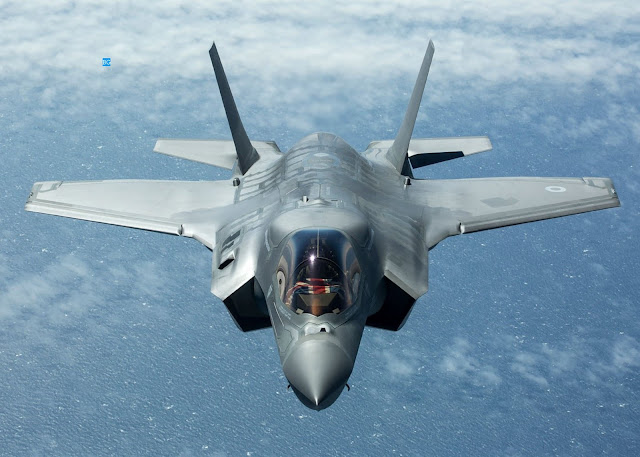
British F-35B Jet’s Urgent Landing in Thiruvananthapuram Amid Fuel Crisis, Stormy Seas
UK F-35B Jet Makes Urgent Landing at Thiruvananthapuram Airport Amid Fuel Shortage
Thiruvananthapuram, June 15, 2025 – A British F-35B Lightning II stealth fighter jet performed an urgent landing at Thiruvananthapuram International Airport in Kerala on Saturday night, June 14, 2025, after facing a severe fuel shortage during operations over the Indian Ocean. The incident, which triggered a comprehensive emergency response from airport authorities, underscored the challenges of conducting high-stakes military missions in turbulent conditions.
The advanced aircraft, operating from the Royal Navy’s HMS Prince of Wales aircraft carrier, was participating in joint naval exercises with the Indian Navy in the Arabian Sea. According to sources, the jet made multiple failed attempts to land on the carrier due to choppy sea conditions, which rendered deck operations hazardous. With fuel reserves critically low, the pilot sought emergency clearance to land at Thiruvananthapuram International Airport around 9:00 PM.
Airport officials immediately initiated a full-scale emergency protocol, deploying ground crews, fire brigades, and medical units to ensure a secure landing. The F-35B, known for its short take-off and vertical landing (STOVL) capabilities, touched down safely at approximately 9:30 PM without any issues. “The pilot reported dwindling fuel and requested immediate landing permission. The situation was managed with utmost precision,” an airport insider stated. The jet was then guided to a protected bay, where it awaits further instructions from Indian central authorities for refueling and subsequent operations.
The rare landing of a cutting-edge fighter jet at a civilian airport attracted significant attention, prompting heightened security measures around the facility. The F-35B, a key asset for precision strikes, electronic warfare, and intelligence gathering, is integral to the UK’s Carrier Strike Group, currently deployed in the Indo-Pacific. Defense experts noted that such diversions, though uncommon, highlight the operational complexities of carrier-based missions, especially in stormy seas.
Diplomatic discussions between India and the UK are underway to arrange the jet’s refueling and departure, with no official comment yet from the British High Commission in New Delhi. This incident follows a similar F-35B emergency in the UK on June 12, 2025, involving a minor technical glitch during a routine flight, suggesting potential pressures on the fleet’s operational demands.
The safe handling of the Thiruvananthapuram landing showcases the seamless coordination between Indian civil aviation and defense authorities, as well as the strengthening defense partnership between India and the UK. As the jet remains grounded pending clearance, the event highlights the intricate demands of modern military aviation and the importance of global cooperation in crisis management.
Article Key Points
- Urgent Landing: On June 14, 2025, a UK F-35B Lightning II jet landed urgently at Thiruvananthapuram International Airport at 9:30 PM due to a critical fuel shortage.
- Reason for Diversion: Operating from the HMS Prince of Wales, the jet couldn’t land on the carrier due to turbulent sea conditions, forcing the pilot to request clearance at the civilian airport.
- Airport Action: Authorities declared a comprehensive emergency, ensuring a safe landing with no damage or injuries, and secured the jet in a protected bay.
- Mission Context: The F-35B was part of UK-India naval drills in the Arabian Sea, reflecting the deepening defense ties between the two nations.
- Awaiting Clearance: The jet awaits central government approval for refueling, with ongoing diplomatic efforts to resolve logistics between India and the UK.
- Prior Incident: A similar F-35B issue occurred in the UK on June 12, 2025, with a technical glitch, indicating possible operational challenges for the fleet.

